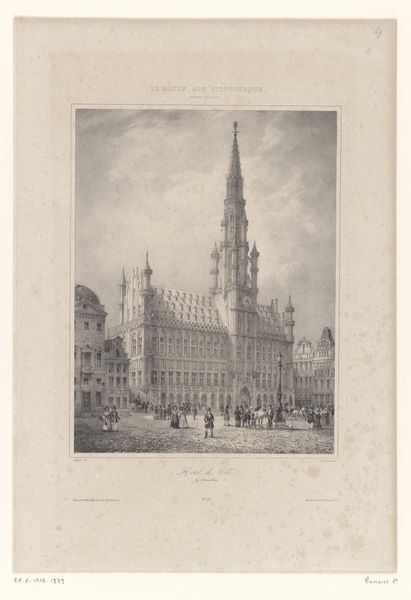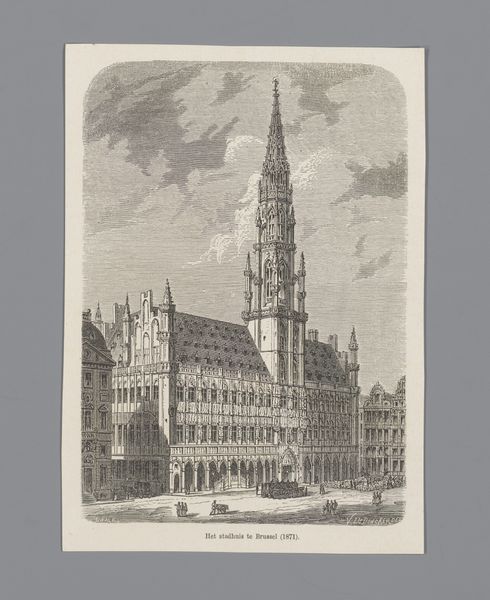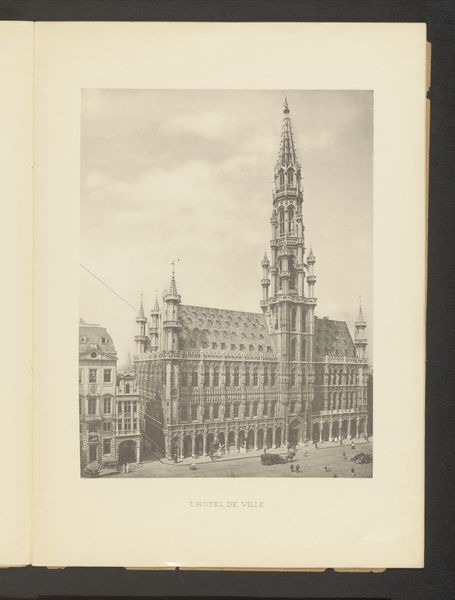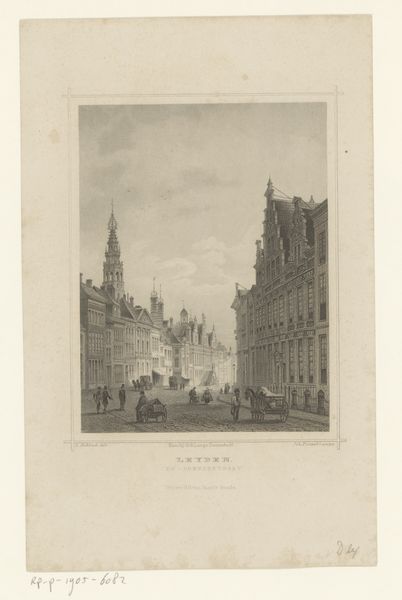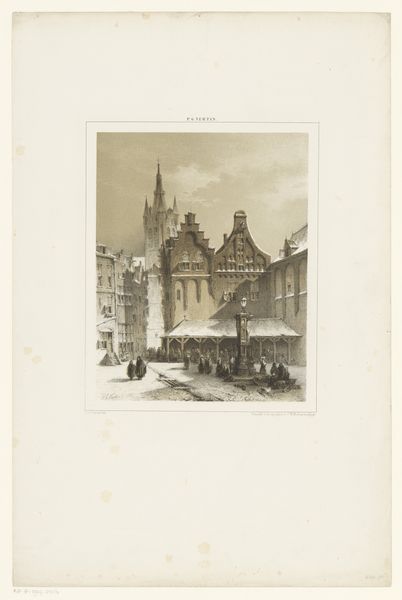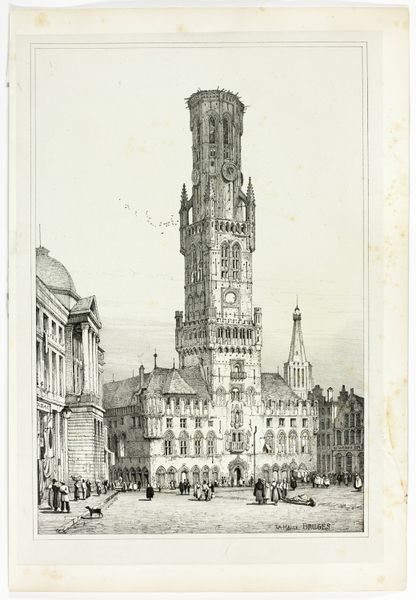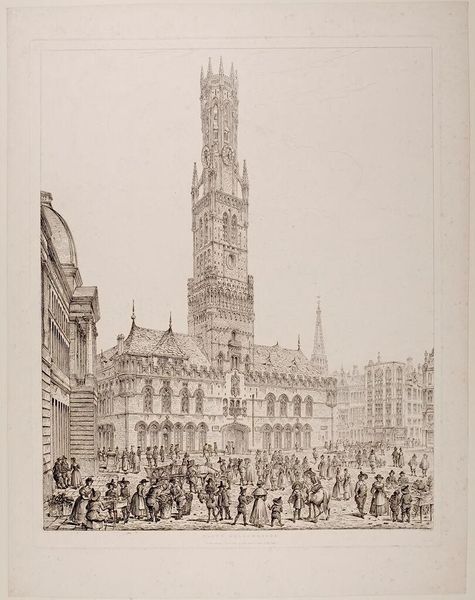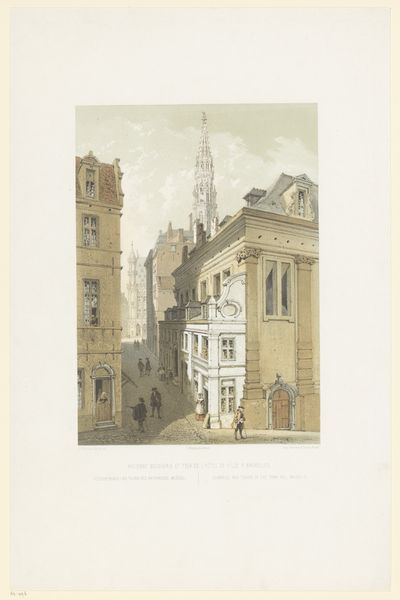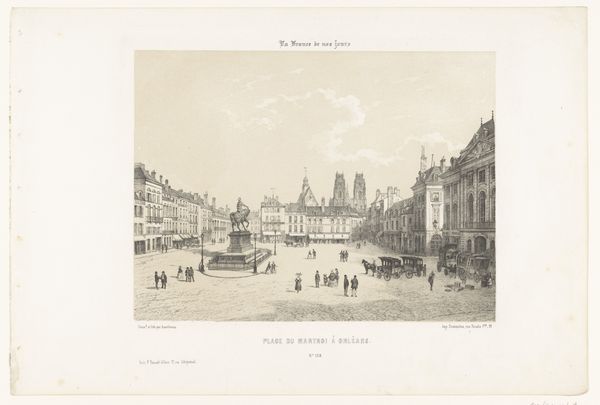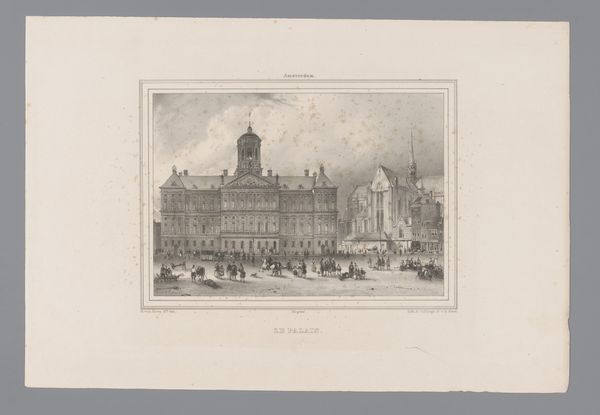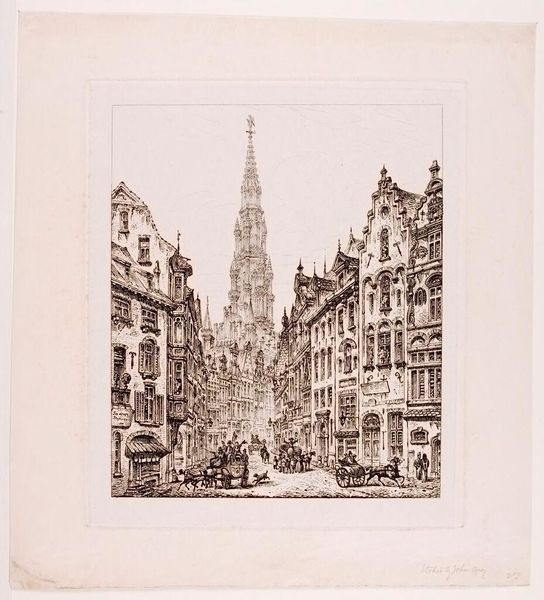
Dimensions: height 526 mm, width 342 mm
Copyright: Rijks Museum: Open Domain
Editor: Here we have "Stadhuis te Brussel", or Brussels City Hall, an etching and engraving by François Stroobant, created sometime between 1852 and 1878. It has such a formal and structured quality with the architecture. How would you interpret this piece within the historical context? Curator: Given that it was created during a period of significant urban development and nation-building across Europe, particularly in Belgium, one must consider how Stroobant's portrayal contributes to the civic identity and visual narrative of Brussels. Does it romanticize or idealize civic power? Consider the intended audience; prints like this were often circulated to promote national pride and a sense of cultural heritage. Editor: That makes me think about who had access to it. Was this image made for people in Brussels or to project an image of Brussels to others? Curator: Excellent question. The distribution networks are critical. Were these primarily purchased by wealthy patrons, displayed in government buildings, or sold to tourists as souvenirs? Think about the visual language, the sharp detail offered by engraving and etching techniques. Does this meticulousness reflect a desire for accuracy, or does it also serve a symbolic function, perhaps emphasizing order and stability during a time of rapid social change? Editor: I hadn't thought about the printing process as adding to the image's meaning. Curator: Exactly. The choice of printmaking allowed for wide distribution and created a standardized image of civic pride. Consider also the location, now housed in the Rijksmuseum, speaks to its recognized historical significance within a larger Dutch context. The work is re-inscribed with meaning and purpose, moving through different contexts over time. Editor: So much more to this piece than just a pretty picture. Curator: Indeed. Seeing art as intertwined with historical and political forces allows for a much richer understanding. I think I understand a bit better now, too, about the city’s symbolic role, and this image’s own place in art history.
Comments
No comments
Be the first to comment and join the conversation on the ultimate creative platform.
